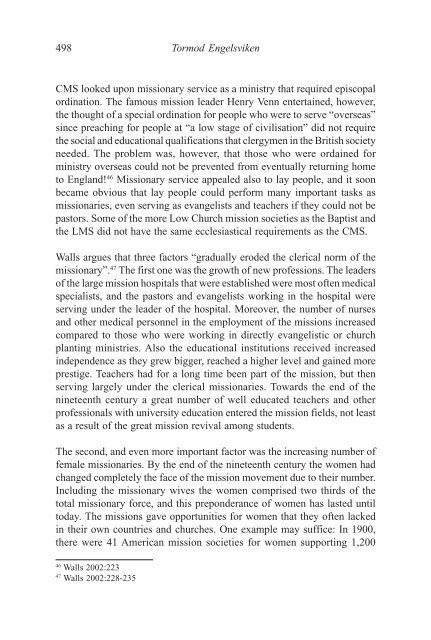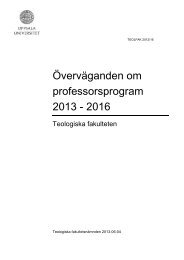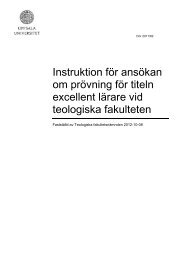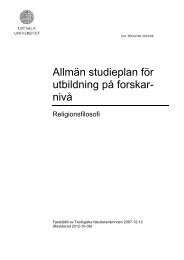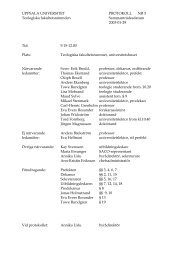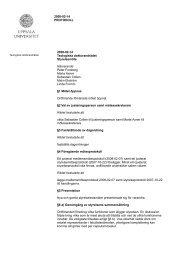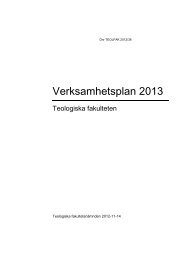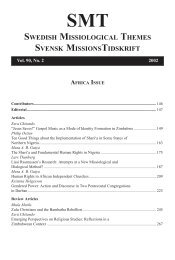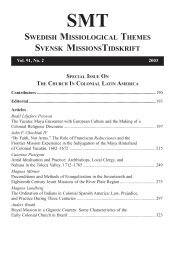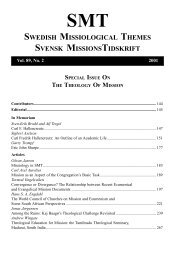SWEDISH MISSIOLOGICAL THEMES SVENSK MISSIONSTIDSKRIFT
SWEDISH MISSIOLOGICAL THEMES SVENSK MISSIONSTIDSKRIFT
SWEDISH MISSIOLOGICAL THEMES SVENSK MISSIONSTIDSKRIFT
Create successful ePaper yourself
Turn your PDF publications into a flip-book with our unique Google optimized e-Paper software.
498 Tormod Engelsviken<br />
CMS looked upon missionary service as a ministry that required episcopal<br />
ordination. The famous mission leader Henry Venn entertained, however,<br />
the thought of a special ordination for people who were to serve “overseas”<br />
since preaching for people at “a low stage of civilisation” did not require<br />
the social and educational qualifications that clergymen in the British society<br />
needed. The problem was, however, that those who were ordained for<br />
ministry overseas could not be prevented from eventually returning home<br />
to England! 46 Missionary service appealed also to lay people, and it soon<br />
became obvious that lay people could perform many important tasks as<br />
missionaries, even serving as evangelists and teachers if they could not be<br />
pastors. Some of the more Low Church mission societies as the Baptist and<br />
the LMS did not have the same ecclesiastical requirements as the CMS.<br />
Walls argues that three factors “gradually eroded the clerical norm of the<br />
missionary”. 47 The first one was the growth of new professions. The leaders<br />
of the large mission hospitals that were established were most often medical<br />
specialists, and the pastors and evangelists working in the hospital were<br />
serving under the leader of the hospital. Moreover, the number of nurses<br />
and other medical personnel in the employment of the missions increased<br />
compared to those who were working in directly evangelistic or church<br />
planting ministries. Also the educational institutions received increased<br />
independence as they grew bigger, reached a higher level and gained more<br />
prestige. Teachers had for a long time been part of the mission, but then<br />
serving largely under the clerical missionaries. Towards the end of the<br />
nineteenth century a great number of well educated teachers and other<br />
professionals with university education entered the mission fields, not least<br />
as a result of the great mission revival among students.<br />
The second, and even more important factor was the increasing number of<br />
female missionaries. By the end of the nineteenth century the women had<br />
changed completely the face of the mission movement due to their number.<br />
Including the missionary wives the women comprised two thirds of the<br />
total missionary force, and this preponderance of women has lasted until<br />
today. The missions gave opportunities for women that they often lacked<br />
in their own countries and churches. One example may suffice: In 1900,<br />
there were 41 American mission societies for women supporting 1,200<br />
46 Walls 2002:223<br />
47 Walls 2002:228-235


